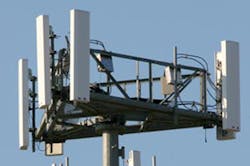Sizing Up Specifications for Microwave Dividers and Couplers
Combining and dividing high-frequency signals is often necessary when processing signals in multiple-channel systems, and power combiners and dividers are essential component-building blocks for this purpose. These components are available from a wide range of suppliers with different performance specifications and features and in many package styles, from miniature drop-in housings to large waveguide components. An eight-page application note from Marki Microwave, “Microwave Power Dividers and Couplers Tutorial,” provides an overview of RF/microwave power combiners and dividers and how to correlate different performance specifications and features to the requirements of different applications.
Power dividers and couplers are usually reviewed with almost identical figures of merit with some small differences. The splitting power of a coupler or divider is usually such that the input power is equally distributed among the output ports, so that a divider with a two-to-one output-to-input relationship will provide output levels that are each 50% that of the input power level and a divider with a three-to-one output-to-input relationship will provide output levels that are each about 33% that of the input power level. Power dividers and coupler circuits can also be designed with phase-shift differences between two output signals of 0, 90, or 180 deg. as needed. The units with 0-deg. phase differences in outputs are usually the easiest to design and the most common.
Power dividers and combiners are evaluated by a number of other parameters, including insertion loss, phase balance, isolation, and return loss. The isolation or separation between output ports, for example, is generally related to the bandwidth of a power divider or combiner, with isolation generally dropping as the bandwidth of a component increases. For components with octave bandwidth, for example, isolation of 15 deg. is considered quite good, although for a multioctave-bandwidth power divider, such as DC to 40 GHz, isolation of 6 dB may be considered high.
The application note sizes up the different performance specifications for power dividers and couplers and the various tradeoffs that are necessary for reaching different performance goals, such as broadband versus narrowband coverage. It includes an easy-to-follow tabular review of different power dividers and couplers, including resistive power dividers, Wilkinson power dividers, directional couplers, and quadrature hybrids, as well as a short list of references with additional reading on understanding dividers and other components, such as filters, in high-frequency systems.
Marki Microwave, 215 Vineyard Ct., Morgan Hill, CA 95037; (408) 778-4200
About the Author
Jack Browne
Technical Contributor
Jack Browne, Technical Contributor, has worked in technical publishing for over 30 years. He managed the content and production of three technical journals while at the American Institute of Physics, including Medical Physics and the Journal of Vacuum Science & Technology. He has been a Publisher and Editor for Penton Media, started the firm’s Wireless Symposium & Exhibition trade show in 1993, and currently serves as Technical Contributor for that company's Microwaves & RF magazine. Browne, who holds a BS in Mathematics from City College of New York and BA degrees in English and Philosophy from Fordham University, is a member of the IEEE.
